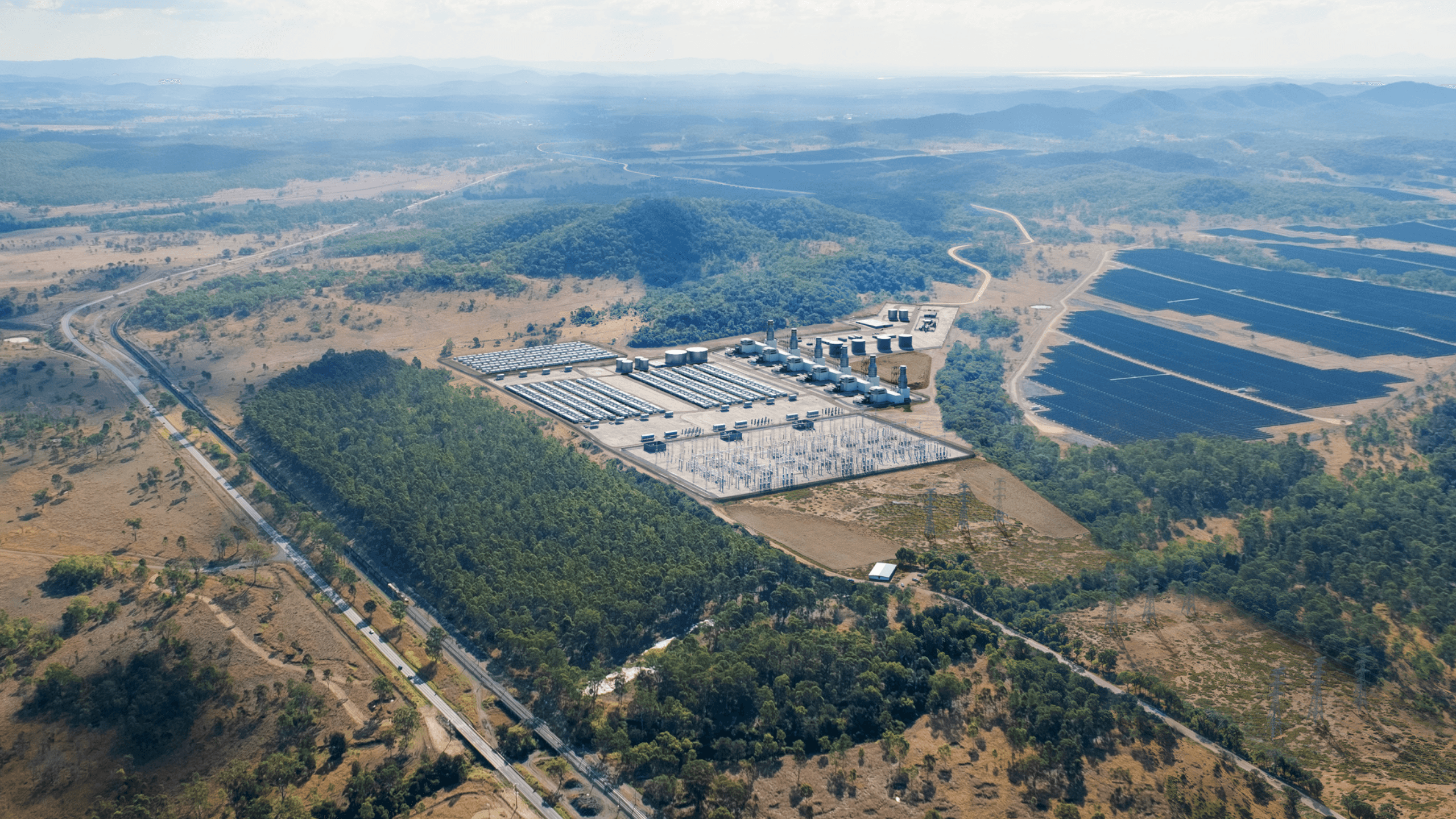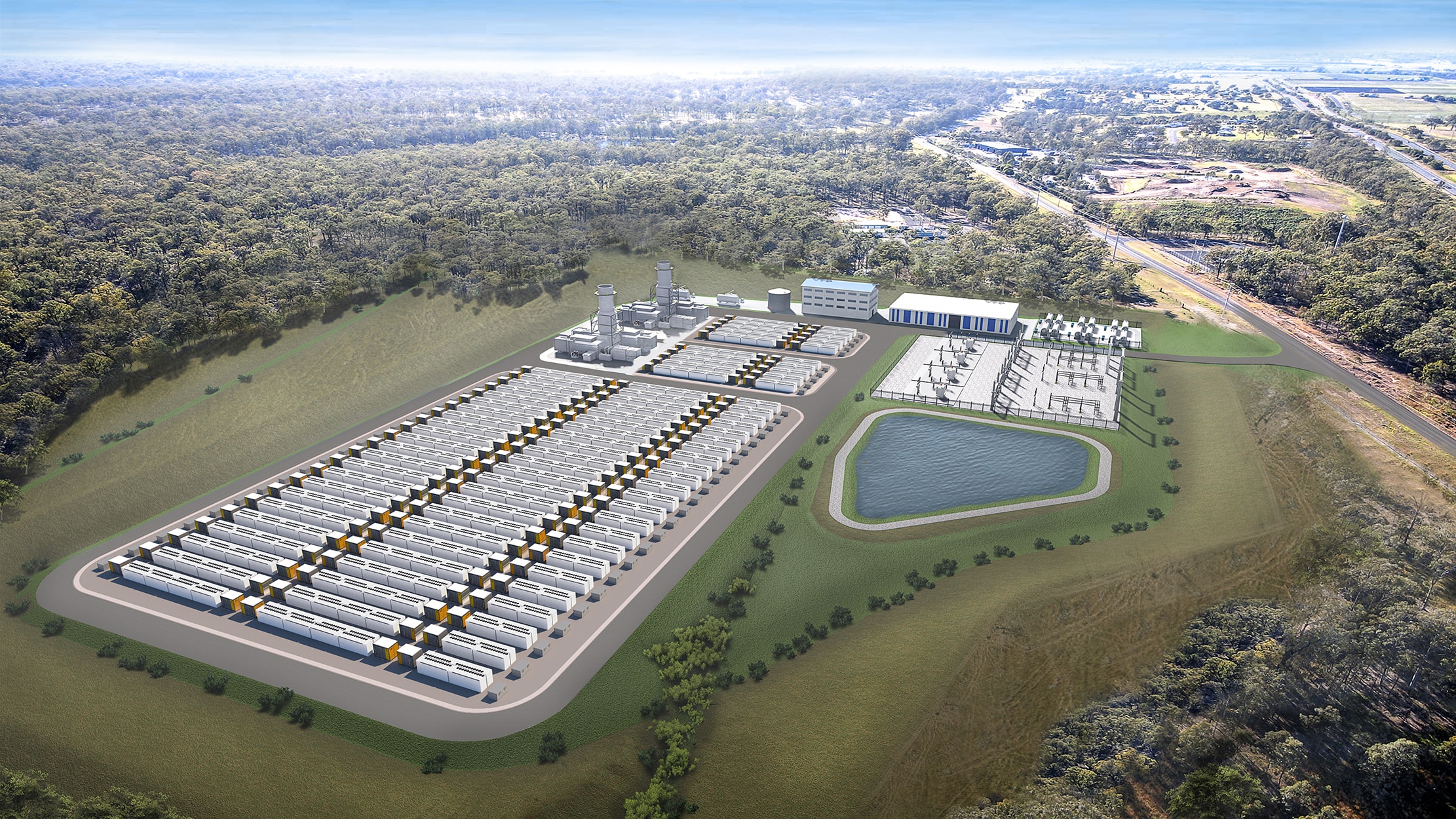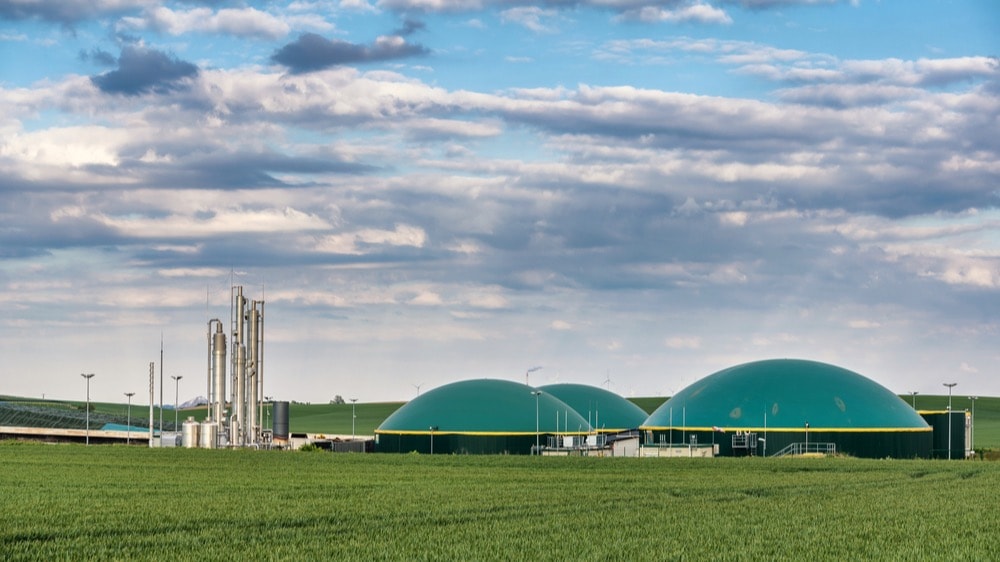
- Media releases
- Gas Power
- Battery storage
Stanwell and Quinbrook Strengthen Partnership with Gladstone SDA Energy Hub Agreement
03 December 2025

Gas is a fossil fuel used to generate electricity, heat homes and power industry. In the electricity market, it plays a distinct role as a fast, flexible fuel that can be dispatched quickly to meet demand, particularly when renewable generation from wind and solar is low.
Most gas-fired generation in Australia is powered by natural gas or coal seam gas, both extracted from underground geological formations. Once processed, this gas is delivered to power stations via high-pressure pipelines and used to fuel turbines or engines.
Because gas-fired generators can ramp up quickly and operate on demand, they’re typically used as peaking plants – running for short periods during spikes in demand. This makes gas a valuable source of firming capacity as the energy system shifts towards cleaner sources.
In 2024, gas represented 7.6% of Australia’s energy supply - Clean Energy Council.
Gas-fired power stations generate electricity by burning fuel to create heat, which drives turbines or engines connected to a generator. There are three main types of gas power plants used in Australia:
OCGT - Open Cycle Gas Turbines: OCGTs work like stationary jet engines. Air is compressed, mixed with fuel, then ignited. The expanding gases spin a turbine, which powers a generator to produce electricity. These plants are fast to start and are typically used for short bursts during periods of peak demand. Their thermal efficiency is between 35% and 41%. These turbines will take 10 to 20 minutes from start-up to full load.
CCGT - Combined Cycle Gas Turbines: CCGTs add a second stage to the OCGT process. After the initial turbine is powered, the hot exhaust gases are used to produce steam, which drives a second turbine. This makes CCGTs more efficient, but also slower to start and less flexible in operation. Combined turbines have a thermal efficiency is between 50% and 55%. These turbines will take 20 to 40 minutes from start-up to full load.
RECIPROCATING: These operate like large-scale internal combustion engines, using pistons and cylinders to generate mechanical energy. Reciprocating engines are known for their rapid start-up times and ability to synchronise with the grid within minutes, making them ideal for fast-response firming. Reciprocating turbines have a thermal efficiency is between 45% and 48%. These turbines will take just 5 minutes from start-up to full load.
Source: AEMO Integrated System Plan 2019 Input and Assumptions workbook, AGL, Power Engineering Magazine 1.1.18.

There are various kinds of gas which can be used to generate electricity:
Natural gas - around 95% methane; non renewable
Coal-seam gas - mostly methane, with trace amounts of ethane, nitrogen and carbon dioxide; non-renewable
Landfill gas - typically 40–60% methane with a high carbon dioxide content; renewable
Sewerage gas - primarily methane; renewable
Gas produced from organic waste sources like landfill and wastewater is known as biogas. Because its production-and-use cycle is continuous, biogas is considered a renewable energy source with no net carbon dioxide emissions. When cleaned and upgraded, it becomes biomethane, which can be used in place of natural gas.

03 December 2025

13 August 2025

06 October 2024
Stay up to date with quarterly news from Stanwell, delivered straight to your inbox. Learn more about our projects, partnerships and how we're delivering affordable, reliable and secure electricity for Queensland.